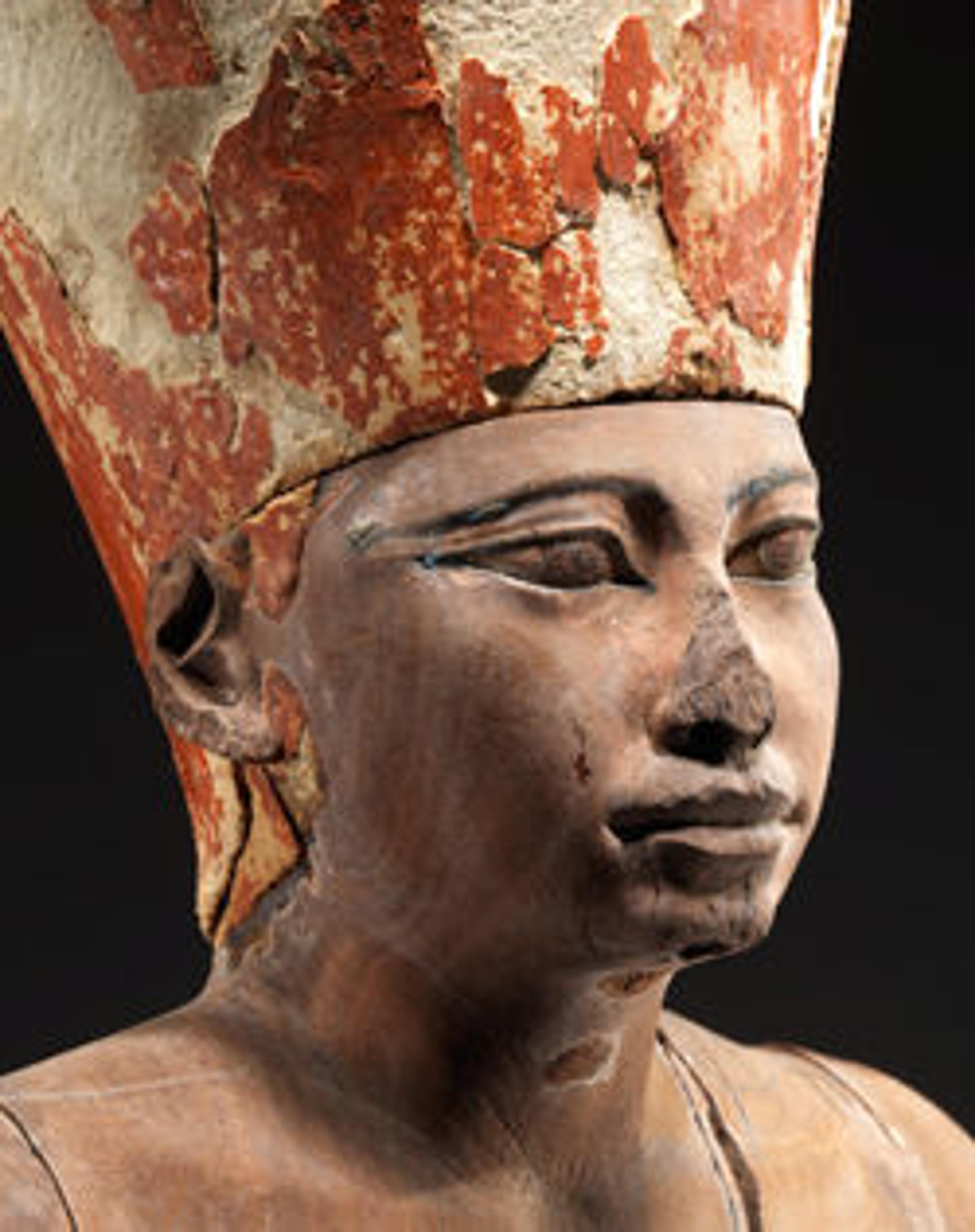Figurine of a Dog
Already in the Early Dynastic Period, Egyptians deposited faience figurines of wild animals in temple precincts. These figurines were reintroduced in the 12th Dynasty, but as a component of burial equipment and with new species added to the repertoire. The controlled representation of desert animals may have assured the Egyptians of eternal safety, though they also likely had symbolic meanings. The dog may represent a personal wish for companionship.
Artwork Details
- Title: Figurine of a Dog
- Period: Middle Kingdom
- Dynasty: Dynasty 12
- Reign: reign of Senwosret I
- Date: ca. 1961–1917 B.C.
- Geography: From Egypt, Memphite Region, Lisht South, Pyramid Complex of Senwosret I, outer court west, east of boat pit, MMA excavations, 1923–24
- Medium: Faience
- Dimensions: L. 5.3 cm (2 1/16 in.); W. 2.3 cm (7/8 in.); H. 3.6 cm (1 7/16 in.)
- Credit Line: Rogers Fund and Edward S. Harkness Gift, 1924
- Object Number: 24.1.51
- Curatorial Department: Egyptian Art
More Artwork
Research Resources
The Met provides unparalleled resources for research and welcomes an international community of students and scholars. The Met's Open Access API is where creators and researchers can connect to the The Met collection. Open Access data and public domain images are available for unrestricted commercial and noncommercial use without permission or fee.
To request images under copyright and other restrictions, please use this Image Request form.
Feedback
We continue to research and examine historical and cultural context for objects in The Met collection. If you have comments or questions about this object record, please contact us using the form below. The Museum looks forward to receiving your comments.
